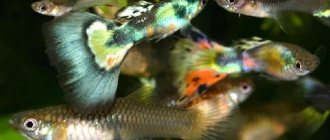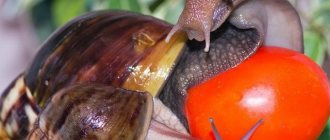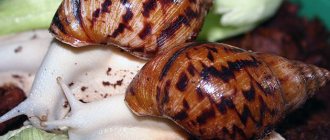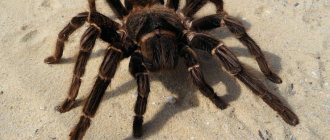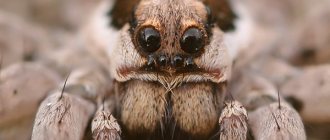To start or not?
Today, the inhabitants of home exoterrariums are a variety of species of lizards: from iguanas to geckos. Some people who like to tickle their own nerves even get huge monitor lizards or snakes. And, of course, the specifics of keeping this pet (temperature conditions, feeding ration, and care nuances) completely depend on who exactly will live in your terrarium. Therefore, it is not enough just to familiarize yourself with the general recommendations for keeping reptiles in the house; you need to study in detail all the available information about exactly the species that you are planning to keep. Indeed, despite their rather repulsive appearance for many people, snakes, iguanas and other creatures in reality are very fragile and vulnerable creatures. This is especially true for chameleons - the strangest and most mysterious inhabitants of planet Earth.
Chameleons are medium-sized insectivorous lizards that most often live on tree branches. The unique ability of these creatures is that they can use camouflage (the color of a chameleon can vary from gray to light green). With such changes in skin tone, it can be extremely difficult to see them in the mass of foliage.
It is this feature that has become a fashionable “trick” of chameleons, which most of all attracts exotic fans to reptiles. This is why chameleons so often become pets to be proud of and show off. However, simply having such a lizard and providing it with the most comfortable living environment is not the same thing. Beautiful creatures by nature have weak immunity and vulnerability to various kinds of diseases - therefore they require especially careful and painstaking care.
Are you ready to create conditions for this creature that ideally replace its usual habitat? Will you be able to take good care of him and devote time to him? These questions are worth thinking about even before you buy a pet.
Choice when purchasing
All 3 species described above, as mentioned, are more or less adapted to keeping at home, so the final choice depends only on your personal preferences and the size of the part of the room that you are willing to allocate for a terrarium. However, since we are talking about an exotic animal, remember a few rules that will help you not make mistakes when buying :
- The skin of a healthy lizard should not be dirty, uneven, and there should be no extraneous (asymmetrical) blisters, bumps, dark spots or other evidence of disease.
- If you choose an animal in a pet store, where several specimens are presented, never take the brightest or the palest - the closer your choice is to the middle, the more likely it is that there are no problems with the animal (as we already said, chameleons have a peculiar coloring indicator of health and well-being; any deviations are primarily reflected in the color).
- Check your reflexes: no chameleon is initially a tame animal. Therefore, if you pick it up, the normal reaction is dissatisfaction (aggression or fear). If a lizard tries to escape, attacks, bites, hisses, this is normal, but if it shows complete indifference, there is something wrong with it!
- Examine the paws for injuries, tumors and other pathologies.
- The tail of a healthy chameleon is strong, dense and lively, thick at the base, gradually becoming narrower towards the end. If you can see every bone, it means the lizard was not fed correctly.
- The eyes should be open (if the seller tells you that the animal is sleeping, you can be sure that in fact it does not feel its best, because sleeping during the day is not typical for a chameleon). Sunken and cloudy eyes are also an indicator of the disease.
- Another reason to refuse a purchase is the release of foam or saliva from the mouth (don’t believe that this is how it should be). The oral cavity, if you can see it, should look completely clean, there should be no traces of plaque or swelling, and the color should be uniform - pink or yellow.
Before you go to the pet store, find out how much a chameleon of your chosen species costs in your area.
Prices can vary greatly, but you definitely shouldn’t settle for the cheapest option - as they say, the miser pays twice. You should also not purchase animals directly from unknown people, via the Internet or at a poultry market. It’s even worse trying to bring a pet back from an exotic trip.
The only acceptable place for such a purchase is a reputable pet store with a proven reputation. In such an establishment they will not only sell you a proven animal, but will also give you all the necessary advice on caring for it, and in addition, here you can purchase all the numerous additional equipment that you will need.
Reptile lovers will be interested in reading about keeping a red-eared slider in your home.
Chameleon appearance
Representatives of the chameleon family have quite strong differences in appearance from other lizards (they were even separated into a special suborder of worm-tongues: they have so many different things from other reptiles). Fingers fused together and eyes rotating independently of each other - all this can make an indelible impression on the future owner of the chameleon. But this is not all that makes these lizards special in appearance and body structure. They can change their skin tone and blend in with their environment (an escaped chameleon is a real adventure with a long search for the prankster), and their anatomical and morphological structure indicates that the ancestors of these creatures were ancient lizards or even dinosaurs. By analogy with extinct huge monsters, they do not have a bone marrow (it is replaced by a cartilaginous “cap”), and in the chameleon’s lungs there are many additional blind processes that help the animal swell and frighten its enemies and rivals in mating games, making a terrifying impression.
The chameleon family includes about 80 species of these reptiles and several genera, living mainly in Africa, Madagascar and its adjacent islands. But the same common chameleon can be found in mountain forests, semi-deserts or steppes.
In our country, the most commonly sold lizards are from Yemen (Yemen chameleons), panther chameleons and Jackson's chameleons. The differences between them are minor (including in appearance).
Yemen chameleons reach a length of 50 centimeters, but females are always smaller than males (maximum 40 centimeters). These are reptiles with a laterally compressed body, a short neck, a long prehensile tail that can be folded many times, and five-fingered paws. The creature's skin is rough, its eyes are round and very mobile, surrounded by motley colored scales - the same as on the rest of the body. Interestingly, the central tiny hole for the pupil is under no circumstances covered by skin. The lizard's tongue is long, with a depression at the end, which makes it look like a suction cup. It is quickly thrown out to a distance of up to 30 centimeters and reliably attaches itself to the caught prey.
Preparing your place of residence
When choosing a habitat for a chameleon, you need to focus on the animal’s lifestyle (arboreal or terrestrial), as well as its age characteristics. In the wild, such a reptile most often prefers wooded areas and trees, less often it lives in not too deep earthen burrows.
Particular attention should be paid to preparing a place for keeping panther and Yemen chameleons, which are quite easy to care for, but are very large in size. In this case, a special house purchased at a pet supply store, or an old aquarium of sufficient volume may well serve as a home.
One of the most important conditions for a full life for a domestic lizard is ensuring air circulation . Stagnant moisture inside the terrarium provokes the development of parasitic bacteria, which have an extremely negative impact on the health and life expectancy of an exotic pet. Humidity levels should be approximately 60-80%.
This is interesting! In addition to simulating grass cover and natural hills made of wood, it is very important to maintain the ideal temperature in the terrarium: during the day at 28-33°C and about 23°C at night.
It is recommended to install a terrarium with scaly reptiles high enough, in the least crowded place, due to the increased susceptibility of chameleons to stress and loss of appetite. A heated area is provided inside the home of the heat-loving reptile. For this purpose, an incandescent lamp is built in, the power of which is approximately 40-60 watts. A good result is achieved by installing a special heated mat.
Conditions for home keeping
In order for a chameleon to live in comfort at home, you should buy a special exoterrarium for it: vertical, 100-120 liters in volume. 2 lamps are placed in it: the first - with UV radiation, the second - is used for incandescent air.
Separately, you need to take care of heating the bottom of the terrarium at night. The chameleon’s home should also include a shallow mini pond, ideally occupying ¼ of the total area of the terrarium. Important decorative elements will be a tree (depending on the size of the pet and the terrarium, choose a branch or a whole piece of driftwood) and live or artificial landscaping. It is imperative to organize good ventilation inside the house for the chameleon.
You will have to clean such a terrarium once every 2 days (if you are lazy and do it less often, pathogenic microflora can develop in your pet’s home, which is extremely harmful to any type of reptile).
Recommendations for temperature in the exoterrarium: general - should be 22-24 degrees, directly under the heating source - 30-32 degrees. Humidity is maintained within 30-50%. The ultraviolet lamp is turned on for 6-8 hours a day.
If you want to have a couple of individuals at once, you should not put them in a common terrarium: chameleons are quite aggressive towards their relatives (with the exception of the mating period) - therefore, any member of the family can become an enemy, and the neighborhood can end in bloodshed. Organize separate areas for them to live.
First contact with a person
When you first bring your reptile home, you need to disturb the animal as little as possible to reduce stress and allow the chameleon to adapt to its new location.
To make the chameleon get used to you faster, we recommend hand-feeding it at first. Sometimes you can take your pet out and hold it in your arms.
Gradually, the reptile will get used to you and will even crawl into your arms. There are also especially friendly individuals who spend a lot of time with a person and become strongly attached to him.
If the chameleon is outside the terrarium, you need to make sure that the room is clean and free of other animals and drafts. We do not recommend leaving the reptile outside its special habitat.
Household chameleon nutrition
The basis of the diet for these creatures is cockroaches and crickets. It is necessary to find a supplier of these products in advance: without them, the normal existence of your lizard will be impossible. Food should be given in sufficient quantities (4-5 insects for adults and 2-3 for young animals), but the pet should not be overfed.
As for drinking, in their natural habitat these exotic animals drink (or rather, lick) the water that accumulates on the leaves and branches. So, to establish the correct drinking regime, it is not enough to install a drinking bowl with water - you must regularly spray all the internal walls and surfaces of the terrarium with liquid from a spray bottle so that the pet can lick the water (otherwise it will simply die from dehydration).
The diet does not end with two types of insects. It can be diversified by locusts, zoophobass, mealworms and even naked mice (the latter - no more than once a week). It is believed that live food must be removed from the exoterrarium at night so as not to injure the lizard. It is very important to ensure variety in your chameleons' diet. When feeding a pet one type of insect, lizards often develop diseases of the gastrointestinal tract associated with disorders of the digestive system.
Plant foods should also be present in the range of dishes for the reptile. These can be bananas or succulent leaves of any non-poisonous plants.
In veterinary pharmacies you can also purchase special vitamin and mineral supplements designed strictly for reptiles. If they are mixed with food (in the ratio specified in the instructions), the animal will grow healthy. The supplement from Tetra Fauna called “Rep-Cal+Repto Live” for daily use (mix in a 3:1 ratio) received good reviews.
How to clean a terrarium
Do not neglect cleaning and do not accumulate garbage, otherwise bacteria will appear. To avoid disturbing the chameleon, remove it from the terrarium while cleaning. If it is small, then this is not necessary. Use a sponge, brush, scraper and rinse the equipment thoroughly after work.
What should be done:
- Use a solution of dishwashing detergent and soda or soap solution to treat the walls, floors, artificial plants, and all decorations. Dry with a paper towel.
- remove dead insects and any debris.
- if it was too wet, remove mold and mildew.
- The feeder, drinking bowl, and pond are washed as they become dirty.
For prevention and in case of illness of the reptile, disinfect with chloramine or chlorhexidine. Monitor the condition of living plants.
How to clean and change the substrate:
- rocky soil is washed and boiled again 2-3 times a month or as it gets dirty, or heated over a fire for prevention. If disinfection cannot be carried out or the contamination is too great, then the soil is replaced;
- synthetic, cork or coconut rugs are washed in soapy water and treated with chloramine. Boil if necessary;
- Coconut shavings, crumbs, moss, peat, vermiculite, soil, pine bark are boiled once a month or more often for 30-40 minutes, and squeezed out if necessary. Secondary boiling is prohibited - only complete replacement.
Store-bought primer is cleaned and replaced according to the instructions. If contamination gets into a small area, then it is enough to make a local replacement.
Diseases and health problems in chameleons
The structural features of the body of these exotic creatures directly affect the presence of diseases common in their environment. In fact, they often get sick due to problems with the eyes and vision (including the musculo-ligamentous apparatus of the eyes), burns, disturbances in the gastrointestinal tract, lack of vitamins and minerals in the body, which leads to rickets or other malfunctions balance of the reptile's body.
Everything is complicated by the fact that pet diseases arise rapidly and develop extremely quickly - therefore, untimely provision of qualified veterinary care can lead to the death of a chameleon even from a not particularly serious illness.
Food intoxication may also occur, which is usually caused by regular overfeeding of the lizard. Pronounced symptoms of this condition include reptile lethargy, loss of appetite, and constipation. If a chameleon has a weakened immune system, viral diseases cannot be ruled out. When you notice signs such as coughing (immediately rule out the possibility of pneumonia, since lizards do not tolerate temperature changes, drafts and cold), bloating, apathy and lethargy, then most likely your pet is suffering from a helminthic infestation. This problem can be observed in those chameleons that were caught in the wild before getting into the pet store.
The owner of an exotic animal should be alarmed by the slightest disturbance in the behavior of a chameleon - this is a reason to immediately contact a veterinarian. Taking into account all the specifics of these vulnerable creatures, experienced reptile owners immediately take their pet to a herpetologist, and not to the usual veterinary doctor: only this specialized reptile specialist is able to quickly provide adequate and professional assistance to a sick chameleon.
Interesting Facts
- The Yemen chameleon is one of the most aggressive and largest species in the entire chameleon family.
- It is known that the tongue of this reptile is often 1.5-2 times longer than its entire body. Its structure is such that in the resting position it is located in the mouth, held by the cartilaginous bone of the lower jaw. At the moment of attack on prey, the lingual muscle tenses and, with the help of cartilage, the organ is sharply pushed out, then it relaxes, and the lizard pulls it back into the mouth.
- The Yemen chameleon is the most common species among reptile enthusiasts. Every day, all over the world, a huge number of these animals are sold.
It received its name from the region where the species was originally described—the western coast of Yemen, where it still lives. They also inhabit the Arabian Peninsula on the southwestern coast of Saudi Arabia in the wild. They live on the branches of various types of tropical trees.
Breeding chameleons
Yemen chameleons breed quite easily in captivity. And once the owner has mastered the nuances of proper care and maintenance of one reptile, if desired, he can begin breeding offspring by selecting a mate for his pet. The mating process in reptiles occurs on the very first day after the female is placed in the terrarium with the male. There are two main signs that fertilization has taken place and the reptile is pregnant: aggressive behavior of the female pet and a change in its color to darker, with large bright yellow spots over the entire surface of the body.
The gestation of small lizards in the mother’s stomach will last for a whole month or a little more. During this period, it is important to give the female a sufficient amount of liquid (some breeders even feed the reptile with a pipette). A week before the eggs appear, mommy becomes more restless and begins to carefully examine the bottom of her terrarium in search of a place suitable for laying eggs. You can make this task easier for her by placing a small container (40 by 30 centimeters is suitable) with wet vermiculite (at least 15 centimeters deep) in the exoterrarium. The female chameleon will be able to dig a tunnel in it, at the end of which she will lay her eggs.
As soon as the laying has taken place, the container must be placed in the incubator (carefully place the future babies at a distance of 1 centimeter from each other). When laying eggs, it is very important not to turn them over, but to place them on the same side with which the female laid them in the tunnel.
To increase the chances of giving birth to live chameleons, maintain the correct temperature in the incubator (28-29 degrees during the day and 20-22 degrees at night).
After 4-9 months, the offspring hatch into the world. Babies are placed in groups of 5-6 in small terrariums, and when they reach three months of age they are necessarily separated from each other (remember about the aggressive behavior of chameleons towards each other). The diet of the babies will not differ much from the diet of adult chameleons; you only need to add calcium supplements to prevent rickets.
In fact, caring for a pet chameleon is not difficult; it is enough to study the nuances of keeping these exotic beauties in captivity, decide what you will feed them and how to take care of their health and good mood. This must be done before you adopt your pet permanently. And then he will delight you with a good appetite, grooming, and, perhaps, offspring!
You can also read additional recommendations from veterinarians on caring for pets in the “Tips” section.
Description
The Yemen chameleon is a fairly large lizard; males (which are always larger than females in all members of the family) can reach up to 60 cm, including the length of the tail. They have a much more variegated color.
Against the general bright green background of the body, 3 yellow longitudinal spots contrastingly stand out on the sides, alternating with bright yellow or orange and brown transverse stripes. The head has a flattened comb-like appendage, the height of which can reach 7-8 cm.
In females, this growth is not pronounced and usually represents a barely noticeable elevation. The tail is very strong, grasping, performs the function of a “fifth limb”, covered with green and yellow-brown alternating stripes and spots, until its very end.
When at rest, the tail is usually curled into a spiral. The body of chameleons is noticeably flattened laterally. The paws have an interesting structure: 4 fingers on them are sharply divided in pairs in such a way that 2 of them are opposed to the other two. This foot structure allows the lizard to rest securely on tree branches. The legs of males are more massive, especially the hind legs.
A well-known feature is the ability to change color quite quickly. Mainly used for camouflage on various surfaces.
In general, it is not the color itself that is transformed, but its overall tone, while the arrangement of spots and stripes remains constant. The modification of the color of chameleons is associated with the structure of their skin.
In the outer fibrous and deeper layer there are special branched marker cells - chromatophores, containing grains of various pigments - yellow, brown, black and red.
When the outgrowths of chromatophores are reduced, these grains are redistributed, and their largest accumulation appears in the central part of the cells and the lizard acquires the corresponding shade. When black pigment is concentrated in the upper part of the skin, it becomes dark in color.
The combination of both layers results in different color shades. The animal turns green as a result of the refraction of light rays in the surface layer of the skin containing guanine crystals.
Drink
Being arboreal dwellers, Yemen chameleons usually do not recognize drinking bowls.
They simply do not notice them, since in nature they drink morning dew and drops during rain. So it is important to mist the terrarium twice a day with a spray bottle for about two minutes.
You need to spray the branches and decor, and the chameleon will pick up the drops falling from them.
You can also purchase a system that periodically releases drops of water onto the leaves underneath. The humidity in the terrarium should be moderate, about 50%.
Habitat in nature
As you can easily guess from the name, the birthplace of the species is Yemen and Saudi Arabia.
Although these countries are considered desert, chameleons live in coastal areas that regularly receive heavy rainfall and in drier valleys, but with plenty of greenery and water.
Also introduced and established on the island of Maui (Hawaii) and Florida.
In the past, Yemen chameleons were rarely seen in captivity, as wild ones did not take well to even experienced terrarium keepers.
However, over time, individuals bred in captivity were obtained that were much more adapted. So most of the individuals found on sale are locally bred.
The right diet
In their natural habitat, chameleons are predators, feeding on various animals and insects, which the exotic reptile hunts with the help of a long and sticky tongue. The main diet of chameleons consists of non-venomous, flying and crawling insects, including:
- Zhukov;
- spiders;
- flies;
- butterflies;
- dragonflies;
- grasshoppers;
- locusts
Some particularly large scaly reptiles also feed on lizards, rodents and small birds. When kept in apartment conditions, the basis of the diet of an exotic pet should be represented by animal and plant foods. During the day, the reptile is able to eat about 5-10 insects, the number of which directly depends on the appetite and individual needs of the animal.
This is interesting! The reptile practically cannot drink from any container, but is quite capable of consuming liquid through a syringe, pipette or special pump, and chameleons give particular preference to natural juices and non-concentrated honey solutions.
Food of plant origin allows you to replenish moisture in the chameleon’s body and saturate it with essential vitamins. Also forage are the tender leaves of various trees and tree bark, some juicy fruits and berry crops, including kiwi, bananas and persimmons, grapes, cherries, apples and pears, watermelon and melon. Soft vegetables, citrus fruits, herbs and green salad leaves are well eaten by exotics.


